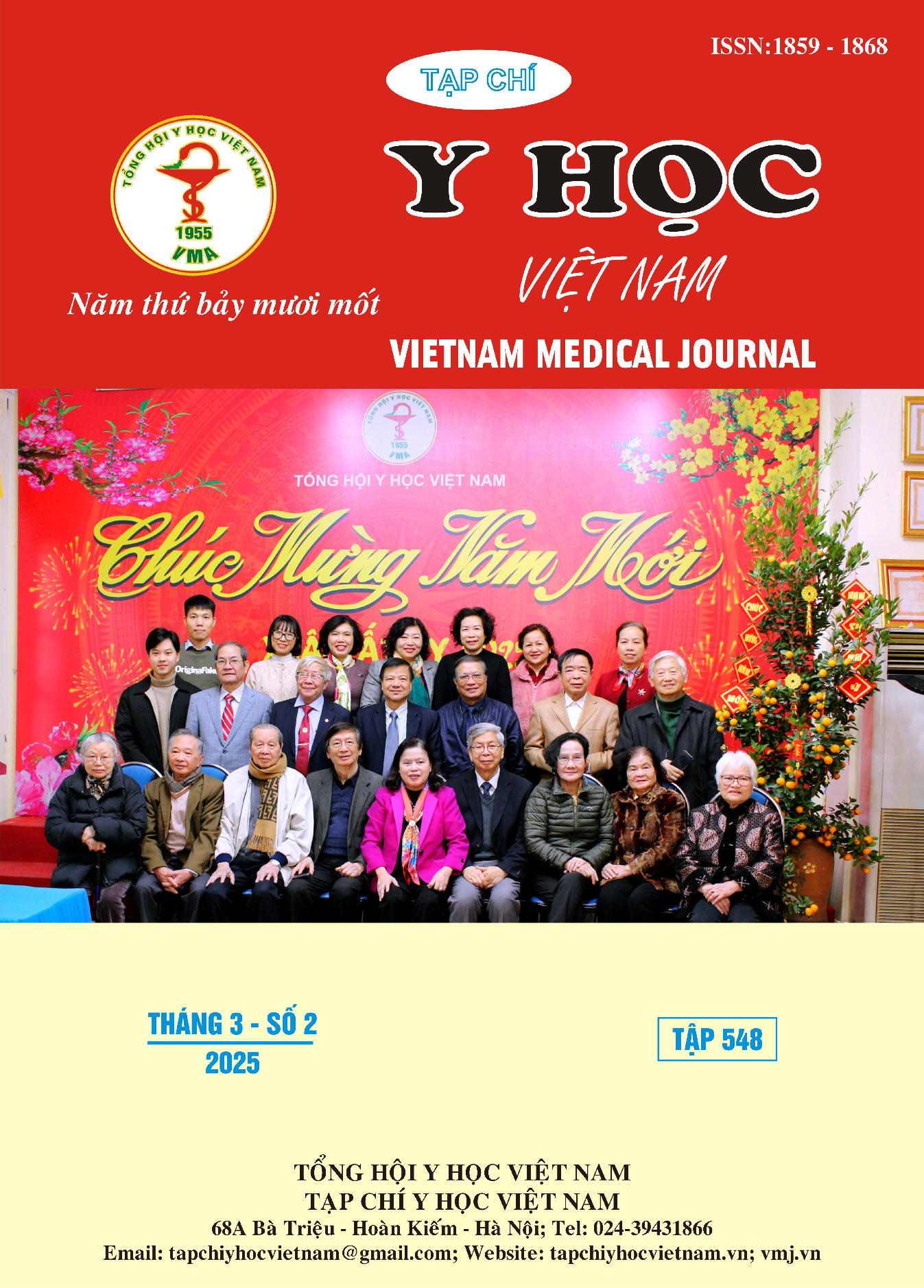CHARACTERISTICS OF BILARY STRICTURE INVESTIGATED THROUGH FLEXIBLE CHOLANGIOSCOPY IN PATIENTS WITH MAIN BILE DUCT STONES AT MILITARY HOSPITAL 103
Main Article Content
Abstract
Objectives: To investigate the characteristics of biliary stricture through flexible cholangioscopy in patients with main bile duct stones at Military Hospital 103. Patient and methods: Descriptive, prospective, non-controlled research on patients with primary bile duct stones with biliary stricture treated by flexible cholangioscopy at the Abdominal surgery centre - Military hospital 103 from July 2021 to July 2024. Results: Researched on 62 patients. Mean age: 60.1 ± 14.1; Female/male ratio = 1.69/1; 75.8% of patients had the history of biliary stone. Of these, 54.8% had biliary operations. Cholangioscopy detected 100% of stricture locations, so it was outstanding other diagnostic imaging methods. Most biliary stricture were in one position (90.3%), intrahepatic stricture (88.7%), and on the left hepatic duct (32.3%). Strictures were usually surrounded by stones. The stritrures were mostly ring-shaped (97.1%), 3mm - <4mm in diameter (52.2%), 2-5mm long (53.6%) and all of them were benign. The average length and diameter of the strictures werw: 3.9 ± 2.9 mm and 3.6 ± 0.7 mm, respectively. Classification: mild stricture accounted for the highest rate (85.5%), moderate stricture was the next one (8.7%). The number, diameter and length of stricture were factors related to the rate of biliary stone and stricture clearance after surgery with p < 0.05. Conclusion: Flexible cholangioscopy was an effective method to investigate the characteristics of biliary stricture. In patients with primary bile duct stones, the majority of stricture were mild, ring-shaped and all benign. They mostly were in one position with moderate diameter and short length. The number, diameter and length of stricture were related to the rate of biliary stone and stricture clearance after surgery
Article Details
Keywords
Flexible cholangioscopy, biliary stricture, primary bile duct stones
References
2. Phonthep Angsuwatcharakon, Santi Kulpatcharapong, Jong H. Moon, et al. (2022). Consensus guidelines on the role of cholangioscopy to diagnose indeterminate biliary stricture. HPB, 24(1): 17-29.
3. S. K. Lee, D. W. Seo, S. J. Myung, et al. (2001). Percutaneous transhepatic cholangioscopic treatment for hepatolithiasis: an evaluation of long-term results and risk factors for recurrence. Gastrointest Endosc, 53(3): 318-23.
4. Aurelio Mauro, Stefano Mazza, Davide Scalvini, et al. (2023). The Role of Cholangioscopy in Biliary Diseases. Diagnostics, 13(18): 2933.
5. K. Li, Y. Ding, N. Liu, et al. (2023). Relationship between postoperative biliary stricture and clinical characteristics of patients with benign and malignant biliary diseases. Wideochir Inne Tech Maloinwazyjne, 18(1): 117-127.
6. S. J. Park, H. H. Chung, S. H. Lee, et al. (2019). Long-term balloon indwelling technique for the treatment of single benign biliary stricture. Diagn Interv Radiol, 25(1): 90-94.
7. A. Alali, M. Moris, M. Martel, et al. (2021). Predictors of Malignancy in Patients With Indeterminate Biliary Strictures and Atypical Biliary Cytology: Results From Retrospective Cohort Study. J Can Assoc Gastroenterol, 4(5): 222-228.
8. Lê Văn Lợi (2021). Nghiên cứu giá trị của cộng hưởng từ, phẫu thuật nội soi và nội soi tán sỏi qua ống nối mật-da điều trị sỏi đường mật chính. Luận án tiến sĩ y học. Viện nghiên cứu khoa học y dược lâm sàng 108.


